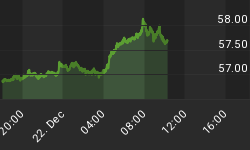Signs Of The Times:
"'Blank-check' shell companies, also known as a 'special purpose acquisition company' raised $4.1 billion on 33 IPOs so far this year, compared with $1.4 billion on 22 offerings during the same period a year ago."
- Wall Street Journal, June 26
During the final year of the South Sea Bubble of 1720 there were some 485 new stock issues. Many were touts about "new" technology, and one was about a deal that was so good it had to be kept a secret.
"UK pension fund with £ 8 billion in assets plans to double its commodity allocation to 2% over the next 18 months.
Chief Investment Officer said 'reducing the volatility of returns is the reason behind our investment in commodities.'"
- Reuters, June 27
Glad they included the explanation - thought they were talking their book.
"Regulators Tighten Subprime-Lending Rules"
- Wall Street Journal, June 30
The BBB subprime mortgage bond we've been following plunged from 100 in August to 73 on February 27. The rebound took it to 84.60 on May 24 and the old low of 73 was taken out a week ago Wednesday and it only took a few days to get down to 68.
It is not certain if this is based upon transaction or a math model.
"United Capital Hedge Fund Halts Withdrawals [by clients]"
- Bloomberg, July 3
The fund has been positioned in subprime mortgage bonds. Where is all that "liquidity" when you really need it?
Stock Market: Last week the BIS published an overview on the financial markets that was meant to be sobering and, as belated as it is, sobriety is the usual consequence to "Rational Exuberance". So far sobriety has been selective.
Our rational exuberance theme has served to emphasize that certain characteristics of the culmination of a great boom are common to each one. Other than the signature of outstanding technical dynamics, the key items include important changes in the yield curve and in credit spreads.
As we've been noting, typically the final stages of a bull market are accompanied by 12 to 16 months of curve inversion. This began in February 2006 which suggests that culminating excesses would be probable in the March to July window.
So far so good, and the next step in this pattern has been that typically the wheels start to fall off the most salient speculations as the curve reverses to steepening. Inversion reached its maximum in late February and had reversed to steepening in May.
Outside of credit instruments, the most intense speculations have been recorded in base metals and the Shanghai Stock Exchange. The latter generated a rare "Upside Exhaustion" reading in May. These types of signals were last seen in the first half of 2000. Opposite signals ("Downside Capitulation") were registered on a number of sectors and exchanges in late September 2002 as that bear concluded.
As represented by nickel and lead, intense speculation accomplished the biggest percentage gains in a hundred years of data. That's on a real basis, as deflated by the PPI and the gains were away beyond previous "bests". Copper did it to May 2006, nickel to this May, and lead is still working on a huge record gain (some 3% of concentrate production has been shut down due to a "lead-poisoning" investigation).
Since nickel's high on May 21 the decline amounts to 34%. From a sensational high in late May Shanghai's initial hit amounted to 21%.
Then we have the second phase of what appears to be an exceptional liquidity problem in the subprime mortgage game. This is not just a problem presented by the end of a sensational ramp up of price. Essentially the markets have to deal with the culture of pricing by mathematic models. Exacerbating this artificiality has been that with all the "bundling" of various mortgage bonds has been the convention of rating the quality by mathematical models as well.
As if that is not enough, there is the culture that because of the assumption of infallibility enormous powers have been granted to central bankers. (One of the most disastrous promoters in financial history, William Patterson, backed the formation of the Bank of England in 1694. The promotional material included the still appealing notion that a central bank with the power to issue notes beyond reserves would "infallibly" lower interest rates.
A brief, but comprehensive, story by Ambrose Evans-Pritchard is worth reading: http://www.telegraph.co.uk/money/main.jhtml?xml=/money/2007/07/02/bcncrunch102.xml
It includes some fine word craftsmanship with "mutant capitalism", "This is the big one: all portfolios will be shredded", as well as some comments from the BIS report.
Our conclusions are that the immense liquidity problem created by financial engineering will eventually be cleared through trade-set prices.
Mr. Margin is having serious meetings with the big brokers with considerable exposure to the mess. Before it is over Mother Nature will be converting even Keynesians to the ancient benefits of sound money.
In the meantime, the SSEC has been working on the test of its May exuberance. The high was 4336 and the test made it to 4312, from which the action has been dull.
That's until today when the 5.3% slump set a series of descending highs and lows. This violates the major trend line and taking out the 3600 level will establish the down trend.
Given the excesses of an "Upside Exhaustion" on the monthly reading, and changes in global credit markets, this could be the start of a cyclical bear market. As this possible transition comes in it will have profound consequences on the senior stock exchanges.















